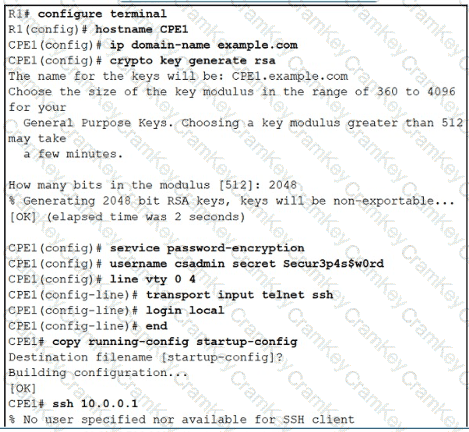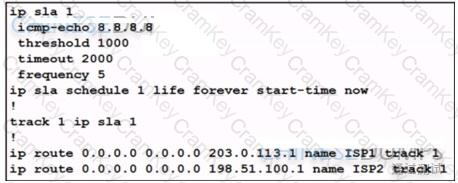| Exam Name: | Implementing Cisco Enterprise Advanced Routing and Services (300-410 ENARSI) | ||
| Exam Code: | 300-410 Dumps | ||
| Vendor: | Cisco | Certification: | CCNP Enterprise |
| Questions: | 594 Q&A's | Shared By: | zack |
Which Layer 3 VPN attribute allows different customers to connect to the same MPLS network wrth overlapping IP ranges?


Refer to the exhibit. An administrator must harden a router, but the administrator failed to test the SSH access successfully to the router. Which action resolves the issue?
Refer to the exhibit.

An administrator configures a router to stop using a particular default route if the DNS server 8.8.8.8 is not reachable through that route. However, this configuration did not work as desired and the default route still works even if the DNS server 8.8.8 8 is unreachable. Which two configuration changes resolve the issue? (Choose two.)
A network administrator added a new spoke site with dynamic IP on the DMVPN network. Which configuration command passes traffic on the DMVPN tunnel from the spoke router?